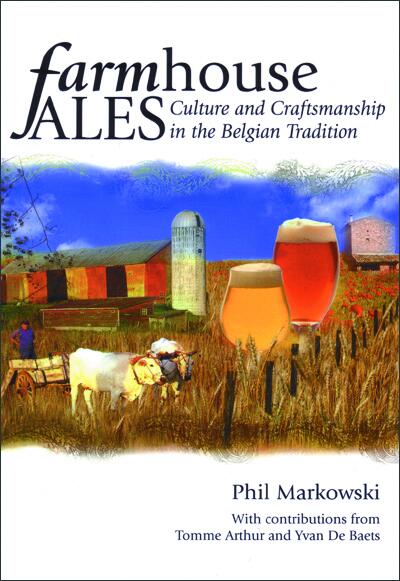
Brewers Publications
$17.95, 2004, 198 pages
Flanders in northern Europe is a flat land once covered with small family farms. As was common throughout the brewing regions of Europe, beer was brewed on these farms for the farmers and their workers. Since farming engaged laborers for much of the year, the brewing season was short; During the winter, a style of “provision” beer was brewed to drink throughout the year.
In Farmhouse Ales: Culture and Craftsmanship in the Belgian Tradition, Phil Markowski, a professional brewer since 1989, discusses in detail the history, character and brewing techniques of the styles of beer known today as saison and bière de garde—farmhouse ales from the area in and around Flanders.
The old Kingdom of Flanders is now divided into regions of the Netherlands, northern France and Belgium. In Belgium, the region is further divided into the Dutch-speaking area still called Flanders and parts of the French-speaking area of Wallonia. It’s in two areas of historic Flanders that saison and bière de garde farmhouse ales are now brewed. Saisons come from the Hainaut province of Wallonia and bière de garde beers are brewed in the northern French departments of Nord and Pas-de-Calais.
Markowski notes that the modern versions of these two styles of beer “are the result of years of interpretation, refinement and reinvention of the simple, rustic ales brewed on farms.” He refers to saison as the “more charismatic of the two, outgoing and quick to get your attention.” Bière de garde he calls “the quiet cousin, it takes time to get to know and appreciate its charms.”
Like other beer style books in the Brewers Publications series, Markowski’s book is divided into chapters that provide an historic overview of farmhouse ales, information on commercial breweries along with tasting notes on the beers they brew, and guidelines and technical information for brewing these beers at home.
Markowski’s objective is “to better define two styles of ale that are misunderstood.” He explains that there are many interpretations of farmhouse ales and that they don’t “neatly fit into predefined style categories.” He reminds his readers that farmhouse ales are brewed by artisans, not large commercial brewers. “Those who revere these farmhouse ales find great appeal in their sometimes wild, unpredictable nature,” Markowski writes. He calls saison and bière de garde “two styles that at times dazzle, delight and defy straightforward categorization.”
The farmhouse ale recipes that Markowski offers homebrewers come from nearly two decades of brewing these beers, first as a homebrewer and later as a professional brewer. He’s done extensive personal research on farmhouse ales, traveled to the regions and breweries where they are produced and spoken with brewers of saison and bière de garde. He’s also added his own philosophy and advice, and his “been there, done that” experiences.
Markowski urges brewers of farmhouse ales to “brew outside the box.” Farmhouse ales are a “third way” of brewing, using extremely high fermentation temperatures, especially for saisons, and employing spices, sugars and multi-strains of yeast—all brewing techniques that lead a brewer away from the modern standards of English and German brewing.
“Brewing authentic farmhouse ales requires an open mind and a bit of daring to push aside ingrained brewing habits. Trust me, the results will be worth the worry,” Markowski tells his readers.











